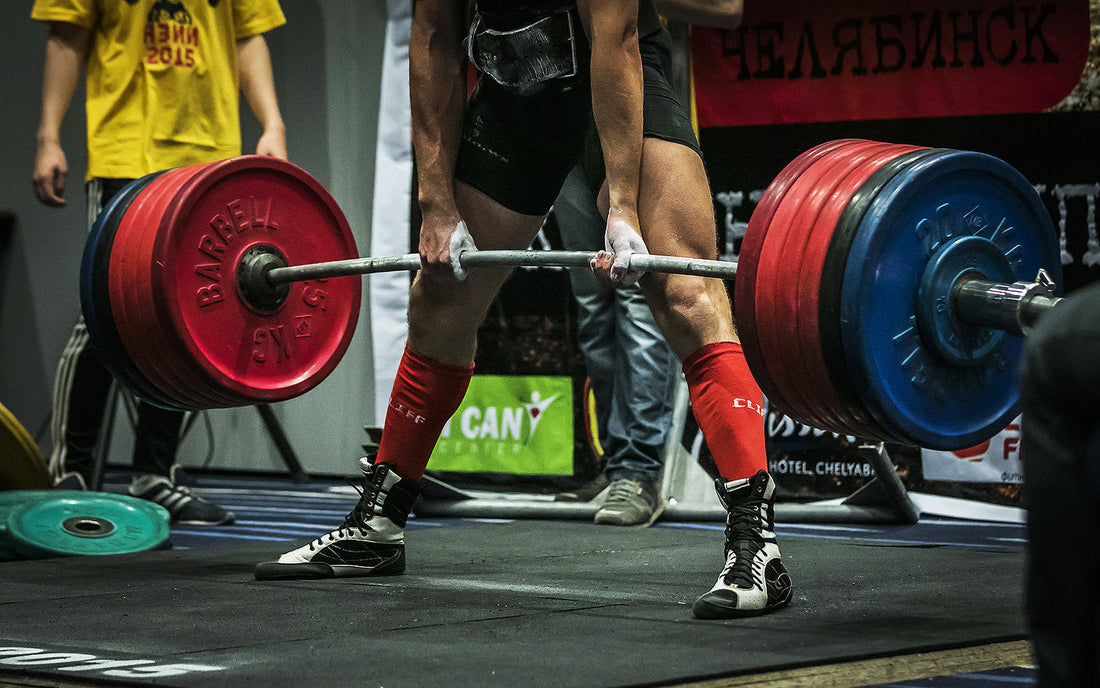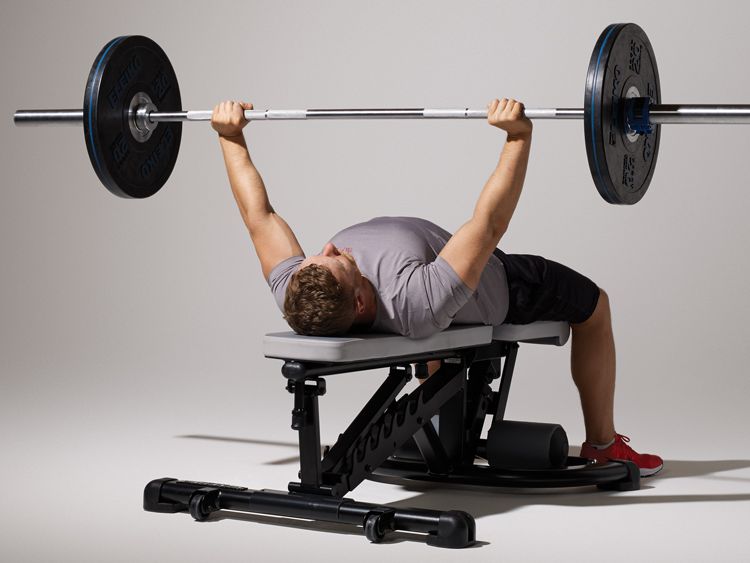
Unlock Your Strongest Bench Press: A Comprehensive Guide to Technique & Accessories
Unlock Your Strongest Bench Press: A Comprehensive Guide to Technique & Accessories
The bench press is a cornerstone of upper body strength and a staple in powerlifting. Whether you're aiming to hit a new personal record (PR) in competition or simply build a more powerful chest, shoulders, and triceps, mastering this lift is key. This guide will delve into proper bench press technique, common mistakes to avoid, and the best accessory exercises to help you unlock your strongest bench.
Understanding Bench Press Biomechanics (Briefly)
To bench effectively, it's helpful to understand the basic physics and anatomy involved. The bench press primarily involves horizontal adduction (bringing the arms toward the midline of the body) and flexion at the shoulder, along with elbow extension (https://www.strongerbyscience.com/how-to-bench/).[34] Key muscles include the pectorals (chest), anterior deltoids (front shoulders), and triceps (https://www.strongerbyscience.com/how-to-bench/).[34, 35] A stable base and efficient force transfer are crucial for maximizing the weight you can lift safely.

Proper Bench Press Setup: The Foundation of a Big Bench
A solid setup is non-negotiable for a strong and safe bench press. Here’s how to get it right:
- Equipment Check: Ensure the bench is stable and grippy enough to prevent your shoulders from sliding (https://www.strongerbyscience.com/how-to-bench/).[34] Set the J-hooks (bar holders) at a height where you can unrack the bar with minimal effort, without losing your shoulder position (https://www.strongerbyscience.com/how-to-bench/).[34, 35]
-
The 5 Points of Contact: For a competition-legal press in most federations, you need five points of contact:
- Head: Remains on the bench (https://www.powerliftingtowin.com/powerlifting-rules-bench-press/).[36]
- Shoulders/Upper Back: Driven into the bench.[36]
- Buttocks: Firmly on the bench.[36]
- Left Foot: Flat on the floor (or blocks, if allowed and needed).[36]
- Right Foot: Flat on the floor (or blocks, if allowed and needed).[36]
- Scapular Retraction and Depression ("Shoulder Blades Back and Down"): This is crucial for shoulder health and stability. Actively pull your shoulder blades together and down, as if trying to tuck them into your back pockets (https://www.elitefts.com/education/how-to-fix-your-bench-press-the-setup/).[34, 35] This creates a stable platform to press from.
- Creating an Arch: A controlled arch in your back (while keeping your butt on the bench) shortens the range of motion and helps maintain upper back tightness ((https://www.reddit.com/r/GYM/comments/1ec04jn/bench_technique_problem/)).[37] The degree of arch varies per individual.
- Foot Position and Leg Drive: Plant your feet firmly on the floor, typically under or slightly behind your knees. During the press, drive through your feet as if trying to push yourself back up the bench. This leg drive transfers force through your body and into the bar (https://www.reddit.com/r/GYM/comments/1ec04jn/bench_technique_problem).[34, 37]
-
Grip Width and Type:
- Width: A common guideline is to have your forearms vertical when the bar is on your chest. Most powerlifting federations require your index fingers to be within the power rings on the barbell (around 81cm apart) (https://www.powerliftingtowin.com/powerlifting-rules-bench-press/).[36] Experiment to find what's comfortable and strong for you.
- Grip: Use a full grip (thumb wrapped around the bar). Avoid a thumbless or "suicide" grip, especially with heavy weights, as it's less secure.[36] Squeeze the bar hard.

Executing the Perfect Bench Press
- The Unrack: With your setup tight, have a spotter help you lift the bar off the rack (a "lift-off"), or carefully unrack it yourself by extending your elbows without losing shoulder position (https://www.strongerbyscience.com/how-to-bench/).[34, 35] Bring the bar to a stable position directly over your shoulders with elbows locked.
- The Descent: Once you receive the "Start" command in a competition (or are ready in training), lower the bar in a controlled manner to your chest or upper abdomen (https://www.powerliftingtowin.com/powerlifting-rules-bench-press/).[36] The bar path is typically a slight arc, touching lower on your chest than where you hold it at lockout. Keep your elbows tucked at a 45-75 degree angle relative to your torso, not flared out to 90 degrees, to protect your shoulders (https://www.youtube.com/watch?v=cY5k09VpR8s).[38, 37]
- The Pause: In powerlifting, you must pause the bar on your chest until it's motionless before receiving the "Press" command (https://www.powerliftingtowin.com/powerlifting-rules-bench-press/).[36, 39] Even in training, a brief pause can help build strength out of the bottom.
- The Ascent: After the "Press" command (or pause), drive the bar explosively back up. Maintain leg drive and upper back tightness. The bar path will typically arc slightly back towards your shoulders, ending with elbows fully locked out over your shoulder joint (https://www.strongerbyscience.com/how-to-bench/).[38, 34]
- The Rack: Wait for the "Rack" command in competition before returning the bar to the J-hooks (https://www.powerliftingtowin.com/powerlifting-rules-bench-press/).[36, 39]
IPF Bench Press Rules & Commands for Beginners
If you plan to compete, familiarize yourself with your federation's rules. For the IPF (International Powerlifting Federation) and its affiliates, key commands are [40, 36, 39]:
- "Start": Given by the head referee once the lifter has unracked the bar, has it motionless with elbows locked, and is in the correct start position.
- "Press": Given once the bar is motionless on the lifter's chest.
- "Rack": Given once the lifter has pressed the bar to straight arms with elbows locked.
Common reasons for a "red light" (failed lift) include [40, 36, 39]:
- Not waiting for commands.
- Buttocks, head, or shoulders losing contact with the bench during the lift.
- Feet moving from their position.
- Bar not touching the chest or not being held motionless.
- Not pressing to full lockout with elbows extended.
- Any downward movement of the bar during the ascent ("sinking" or "heaving").
- Uneven arm extension at lockout.
- Contact of the bar with the rack supports during the lift.
Common Bench Press Mistakes and How to Fix Them
-
Elbow Flare: Elbows flaring out too wide, especially during the ascent.
- Fix: Focus on keeping elbows tucked at a 45-75 degree angle. Strengthen triceps and lats. Think about "bending the bar" or "spreading the bar" with your hands (https://www.strongerbyscience.com/how-to-bench/).[34, 37]
-
Losing Upper Back Tightness/Scapular Position: Shoulder blades protracting or losing depression.
- Fix: Actively cue "shoulders back and down" throughout the lift. Strengthen upper back muscles (rows, face pulls) (https://www.elitefts.com/education/how-to-fix-your-bench-press-the-setup/).[34, 35] Ensure the bench surface isn't too slick.[34]
-
Butt Lifting Off the Bench: A very common fault, especially when leg drive is used incorrectly.
- Fix: Focus on driving horizontally with your legs (pushing yourself up the bench) rather than vertically. Ensure feet are firmly planted (https://www.powerliftingtowin.com/powerlifting-rules-bench-press/).[36]
-
Incorrect Bar Path: Pressing straight up instead of a slight arc, or bar drifting too far over the face.
- Fix: Aim to touch the bar lower on your chest (sternum/upper abs) and press up and slightly back towards your shoulders.
-
Weak Lockout: Struggling to finish the lift and lock the elbows.
- Fix: Strengthen triceps with exercises like close-grip bench press, board presses, and dips.
-
Bouncing the Bar Off the Chest: Using momentum instead of a controlled pause.
- Fix: Practice paused reps in training. Focus on controlling the eccentric (lowering) phase.
Top Accessory Exercises for a Bigger Bench
Accessory exercises target weaknesses and build overall muscle mass, contributing to a stronger bench press. Aim for 3-4 sets of 6-12 reps for most accessory lifts.[45, 46]
- Close-Grip Bench Press: Shifts more emphasis to the triceps, crucial for lockout strength (https://www.elitefts.com/coaching-logs/top-5-assistanceaccessory-exercises-for-the-bench-press/).[42, 43]
- Dips: Excellent for chest, shoulder, and tricep development (https://barbend.com/best-bench-press-accessory-exercises/).[41, 43] Can be weighted as you get stronger.
- Overhead Press (OHP): Builds shoulder and tricep strength, which carries over to the bench (https://www.sportivetricks.co/articles/powerlifting/234/best-accessories-for-bench-press-powerlifting).[41, 46]
- Dumbbell Bench Press: Improves stability, addresses imbalances, and allows for a greater range of motion (https://barbend.com/best-bench-press-accessory-exercises/).[41, 43, 46]
- Push-ups (Weighted/Variations): A fundamental pressing movement that builds chest, shoulder, and tricep strength and endurance (https://www.sportivetricks.co/articles/powerlifting/234/best-accessories-for-bench-press-powerlifting).[41, 42, 43, 46]
- Rows (Barbell, Dumbbell, Cable): A strong back provides a stable platform for benching. Rows build lat and upper back thickness (https://www.sportivetricks.co/articles/powerlifting/234/best-accessories-for-bench-press-powerlifting).[42, 46]
- Floor Press: Limits range of motion, emphasizing triceps and lockout strength. Can be easier on the shoulders (https://www.elitefts.com/education/5-exercises-to-get-your-bench-press-moving-again/).[42, 43, 44]
- Board Press: Similar to floor press, uses boards on the chest to shorten the range of motion and target specific sticking points (https://www.elitefts.com/education/5-exercises-to-get-your-bench-press-moving-again/).[44]

The Role of Wrist Wraps in Bench Pressing
Wrist wraps can be a valuable tool for bench pressing, especially with heavier weights
-
Benefits:
- Increased Wrist Stability: They help keep the wrist in a more neutral and stable position, preventing excessive extension (bending back) under load (https://uppper.com/blogs/news/wrist-wraps-for-bench-pressing-do-they-help).[47, 49, 50]
- Reduced Wrist Discomfort/Pain: By providing support, they can alleviate stress on the wrist joints (https://uppper.com/blogs/news/wrist-wraps-for-bench-pressing-do-they-help).[47, 50]
- Improved Force Transfer: A stable wrist allows for more efficient transfer of force into the bar (https://uppper.com/blogs/news/wrist-wraps-for-bench-pressing-do-they-help).[47, 50]
- Injury Prevention: Can help protect the wrist and elbow joints by restricting excessive movement (https://www.gymreapers.com/blogs/news/do-wrist-wraps-help-you-lift-heavier).[49]
- When to Use: Generally recommended for heavier sets (e.g., 80%+ of 1RM) or working sets where wrist stability might be a limiting factor (https://www.gymreapers.com/blogs/news/wearing-wrist-wraps-for-bench-press).[47, 48] Avoid using them for all warm-ups or lighter sets to allow your wrists to build natural strength.[47]
-
How to Wear: Wrap them securely around the wrist joint, covering both below and slightly above the joint itself for maximum support (https://www.gymreapers.com/blogs/news/how-to-put-on-wrist-wraps).[53] They should be tight but not cut off circulation.
Building a big bench press takes time, dedication, and attention to detail. By focusing on flawless technique, addressing your weaknesses with smart accessory work, and utilizing gear like wrist wraps appropriately, you'll be well on your way to pressing new PRs. Remember to listen to your body, prioritize recovery, and stay consistent.
What are your favorite bench press tips or accessory exercises? Share them in the comments below! And don't forget to check out sbdlife.net for all your powerlifting gear needs.
References:
- StrongerByScience.(https://www.strongerbyscience.com/how-to-bench/). [34] (Primary reference for technique)
- EliteFTS.(https://www.elitefts.com/education/how-to-fix-your-bench-press-the-setup/). [35]
- Reddit r/GYM.(https://www.reddit.com/r/GYM/comments/1ec04jn/bench_technique_problem/). [37] (Illustrative of common issues)
- YouTube - Silent Mike.(https://www.youtube.com/watch?v=cY5k09VpR8s). [38] (Visual cues for bar path)
- PowerliftingToWin.(https://www.powerliftingtowin.com/powerlifting-rules-bench-press/). [36]
- SportiveTricks.(https://www.sportivetricks.co/articles/powerlifting/23/bench-press-commands). [39]
- Novosel Army MWR.(https://novosel.armymwr.com/download_file/view/21343). [40] (General competition rules)
- BarBend.(https://barbend.com/best-bench-press-accessory-exercises/). [43]
- EliteFTS.(https://www.elitefts.com/coaching-logs/top-5-assistanceaccessory-exercises-for-the-bench-press/). [42]
- Seriously Strong Training.(https://seriouslystrongtraining.com/the-6-best-accessory-exercises-to-improve-your-bench-press/). [41]
- EliteFTS.(https://www.elitefts.com/education/5-exercises-to-get-your-bench-press-moving-again/). [44]
- SportiveTricks.(https://www.sportivetricks.co/articles/powerlifting/234/best-accessories-for-bench-press-powerlifting). [45, 46]
- BarBend.(https://barbend.com/best-wrist-wraps/). [22]
- Torokhtiy.com.(https://shop.torokhtiy.com/blogs/reviews/best-wrist-wraps-for-lifting). [54]
- Inner Strength Products.(https://innerstrengthproducts.ca/blogs/athlete-articles/choosing-the-right-sbd-wrist-wraps-a-guide-to-support-and-performance). [23]
- Gymreapers.(https://www.gymreapers.com/blogs/news/do-wrist-wraps-help-you-lift-heavier). [49]
- Riptoned. How to Use Wrist Wraps for Weightlifting. [21]
- Gymreapers.(https://www.gymreapers.com/blogs/news/how-to-put-on-wrist-wraps). [53]
- Iron Bull Strength.(https://ironbullstrength.com/blogs/equipment/do-wrist-wraps-help-bench-press). [47, 51]
- UPPPER.(https://uppper.com/blogs/news/wrist-wraps-for-bench-pressing-do-they-help). [50]
- Gymreapers.(https://www.gymreapers.com/blogs/news/stiff-vs-flexible-wrist-wraps). [55]
- Gymreapers.(https://www.gymreapers.com/blogs/news/wearing-wrist-wraps-for-bench-press). [48]
- Barbell Logic. How to Use Wrist Wraps. [52]
- BarBend.(https://barbend.com/beginner-powerlifting-mistakes/). [33] (Regarding bouncing)








